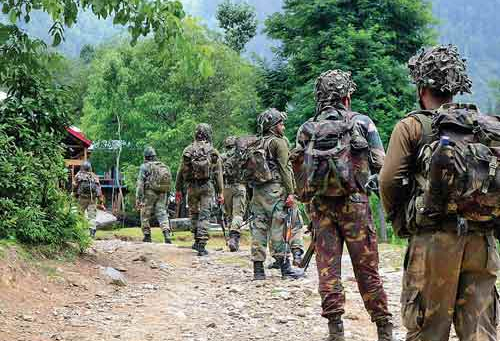
Jammu, Oct 23: Pakistan troops resorted to heavy shelling at Indian positions at 50 locations along the International Border killing one BSF jawan and injuring six others a day after Union Home Minister Sushilkumar Shinde reviewed security situation in Jammu And Kashmir.
According to reports, heavy firing from the Pakistan side was reported last night in the RS Pura and Pargawal sectors and continued for almost six hours.
Pakistani troops fired mortars and rockets targeting BSF posts and nearby villages, reports said.
A senior police officer told reporters that the BSF trooper and others who were injured came under heavy shelling by the Pakistan Rangers on Indian positions last night.
The Rangers violated ceasefire at 50 locations in the sector using 82 mm mortars, heavy weapons and automatics, a senior BSF officer confirmed.
The BSF also strongly retaliated to Pakistan firing and heavy shelling.
In view of the unprovoked firing and increased ceasefire violations from Pakistan, talks between the Director Generals of Military Operations (DGMOs) of the two countries have been put on hold for the time being.
Prime Minister Manmohan Singh and his Pakistani counterpart Nawaz Sharif had agreed upon these talks when they met on the sidelines of the UN general body meeting in New York last month.
Reports claim that in view of rising incidents of ceasefire violations, the South Block is not keen to go ahead with the DGMO-level talks between the two sides.
Union Home Minister Sushilkumar Shinde had onTuesday visited Jammu to take stock of the situation arising from the repeated ceasefire violations by Pakistan Rangers on the international border.
After his interaction with BSF jawans, the Home Minister said provocations from Pakistan won't be tolerated.
"You fight for us, for the nation. You are very brave and I congratulate you all," he told Indian soldiers.
On Monday, Army Chief General Bikram Singh met Defence Minister AK Antony to discuss the situation at the Line of Control and the border.
Till date this year, there have been over 200 incidents of ceasefire violations. In 2012, there were 117 incidents of unprovoked firing by Pakistani soldiers.






Comments
Add new comment